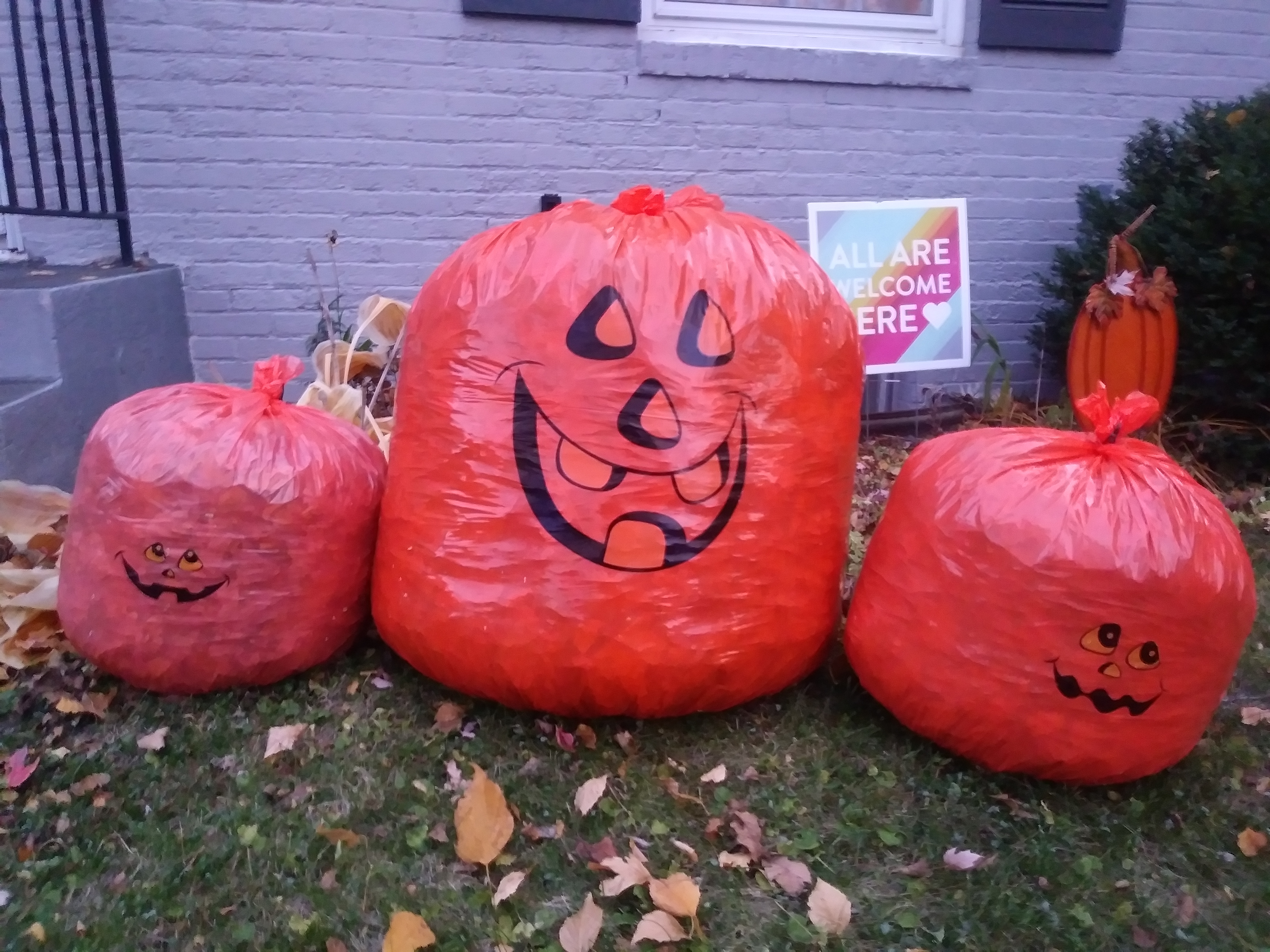OCTOBER 30, 2019 – Yesterday after work-work, I worked raking leaves in our yard. In Minnesota, raking leaves means you’ll soon be shoveling snow. I thought about that as I raked a billion maple leaves into a gigantic pile. Dry, crinkly leaves are a piece of pumpkin pie when compared to shoveling snow onto four-foot-high snowbanks along the driveway.
I looked with envy at the neighbor’s yard across the street. Not a leaf in their yard. But not a tree either. Everything has its cost, and the cost of a rake-free yard, of course, is the absence of trees—and the hoot of an owl, which is what I heard from the big white pine in another neighbor’s backyard.
As I raked, I contemplated the post-rake phase—bagging the leaves. My goal every fall is to stuff a million leaves into each of 10 leaf bags. I accomplish this by compacting the leaves according to my own patentable technique. By this method my leaf bags feel as if they’re loaded with concrete. Yesterday I departed from my usual technique, since I was stuffing leaves into light, orange, decorative leaf bags posing as large jack-o-lanterns. These were my wife’s idea.
We haul our leaf bags to a local compost center, where we rub elbows with lots of other people shaking out their leaf bags.
Yesterday as I raked, I pondered this bizarre practice of ours—this business of raking leaves, bagging them, then dumping them at a compost site. Good for us for not burning them, at least, but really now, how rational is our leaf removal routine?
A salient benefit of planting pine seedlings at the Red Cabin is getting down to earth, literally. On my knees, teasing the roots of a seedling into the soil, I see the dirt, the ground, the earth close up. I notice the freshly fallen leaves on top of the earlier, degraded leaves; the humus below the decaying leaves; and the pure dirt beneath it all. I view the ground as the trees’ giant feeding bin. Add plenty of moisture and photons and you wind up with a well-fed forest.
The beautiful thing is that trees “in the wild” are giant recycling centers. They produce trillions of leaves, which, of course, capture sunlight and synthesizes it into chemical energy that trees use to sustain itself. The leaves recycle each year—in spring, new leaves appear and become little energy factories until fall, when the daylight diminishes and temperatures cool. The chlorophyll breaks down and green yields to red, yellow and orange. The leaves fall to the ground, decay, become humus, then pure dirt. Roots draw minerals from that dirt to enable growth of the trees . . . another crop of leaves, and so on.
But wait! In the city we rake up all those leaves, bag ’em, and haul ’em away. What a waste to treat them as waste!
But if we were to go on rake strike, what would our neighbors across the street think?
(Remember to subscribe to this blog and receive notifications of new posts by email.)
© 2019 Eric Nilsson
